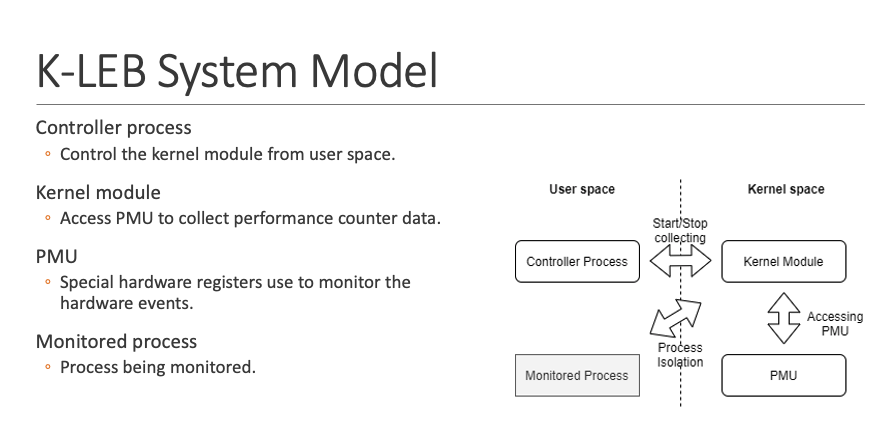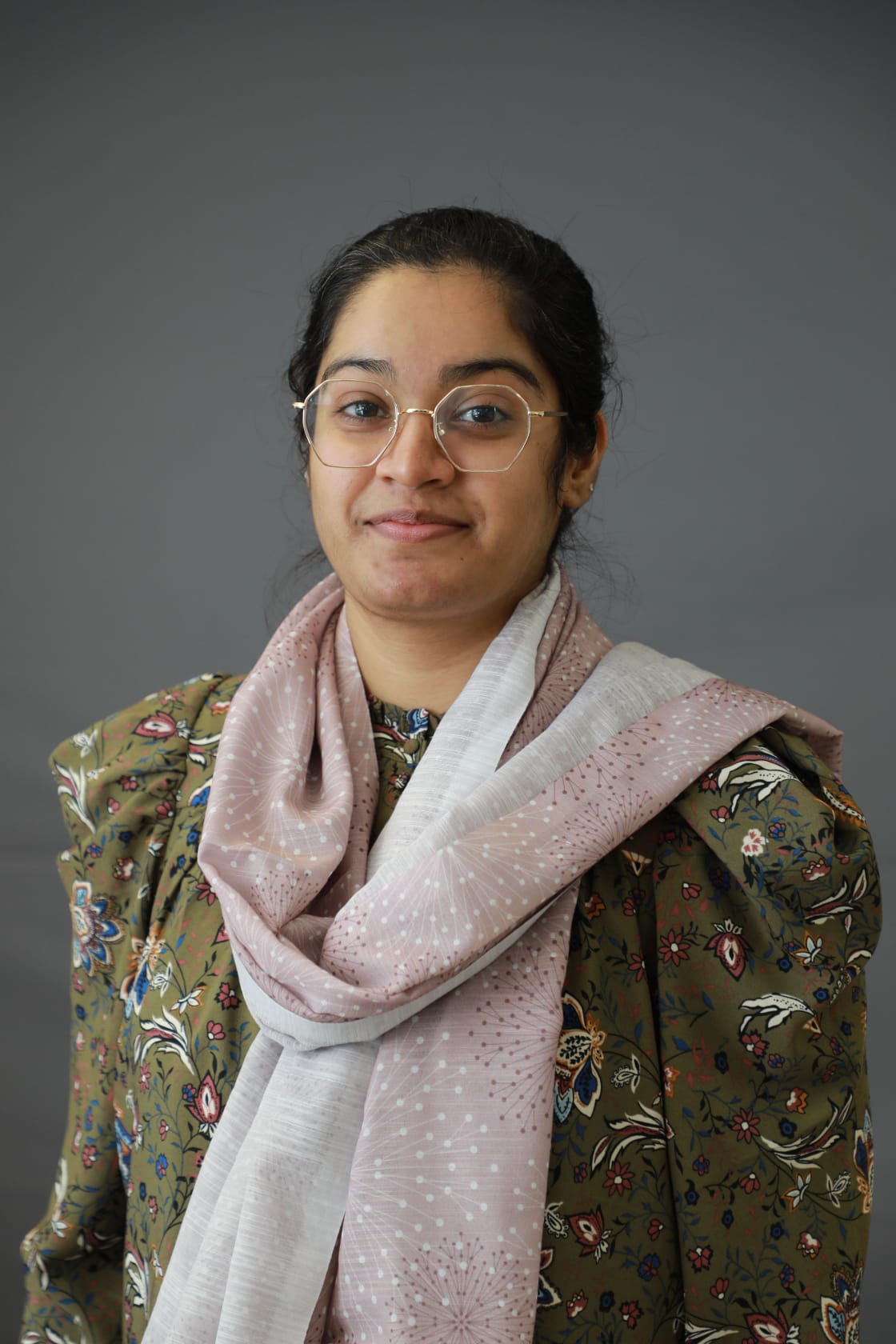Message From the Chair

We are excited to share with you the winter edition of the Department of Electrical & Computer Engineering e-newsletter. Our students and faculty continue to amaze us as they pursue the interdisciplinary research and knowledge needed to solve real-world problems. In this edition, we have highlighted just a few of their stories. I hope you enjoy reading them.
— Paul McGrath, Professor/Chair of Electrical & Computer Engineering
Going International
Chutitep Woralert, a Ph.D. student in the electrical and computer engineering department at Clarkson University, along with his advisor, Dr. Chen Liu, an associate professor of electrical and computer engineering, presented their recently published paper titled “High Frequency Performance Monitoring via Architectural Event Measurement” at 2020 IEEE International Symposium on Workload Characterization (IISWC 2020) held virtually October 27-29.

The International Symposium on Workload Characterization (IISWC) is a top-tier conference on workload characterization research with a long and successful history. IISWC serves as a top-notch technical forum for the presentation of new and exciting advances in the understanding of emerging computer applications and workloads. The conference is often used as the primary venue for interaction between academic and industrial researchers and designers.
Liu and Woralert’s paper says obtaining detailed software execution information using low-level hardware information is a powerful analysis technique, as this information provides an effective method to monitor software program behaviors; hence performance bottlenecks due to hardware architecture or software design and implementation can be identified, isolated and improved on. The granularity and overhead of the monitoring mechanism, however, are paramount to proper analysis. Many prior designs have been able to provide software program monitoring with inherited drawbacks such as intrusive code changes, a slow timer system, or the need for a kernel patch.
Liu and Woralert’s paper presented K-LEB (Kernel – Lineage of Event Behavior), a new monitoring mechanism that can produce precise, non-intrusive, low overhead, periodic performance counter data using a kernel module-based design. Their proposed approach has been evaluated in three different case studies to demonstrate its effectiveness, correctness, and efficiency. By moving the responsibility of timing to kernel space, K-LEB can gather periodic data at a 100μs rate, which is 100X faster than other comparable monitoring approaches. At the same time, it reduces the monitoring overhead by at least 58.8%, and the HPC (High Performance Computing) count difference with other tools are less than 0.3%.
Woralert’s research is supported by the Nicklas-Ignite Research Fellowship. The coauthors of the paper include James Burska ‘18, (Computer Engineering, and Honors program) and Dr. Lok Yan from the Air Force Research Lab.
Detecting COVID-19 Hotspots
By Theresa Cordon, Arizona State University
reprinted with permission

Clarkson University professors Mahesh Banavar, and Stephanie Schuckers, a professor, and director of the Center for Identification Technology Research (CITeR) at Clarkson University are working with their counterparts at Arizona State University to develop a new technology to predict potential COVID-19 hot zones. How are they doing it? Hint: your cell phone plays a big role.
We are all learning new ways to navigate the world in the age of COVID-19. Just deciding to leave home for essential needs has become a more thoughtful and planned process. As many head out with face coverings and hand sanitizer, they have no idea if they are walking straight into a viral hotspot.
A group of researchers from Arizona State University and Clarkson University are collaborating to empower communities with this knowledge.
Andreas Spanias, a professor of electrical engineering, and Cihan Tepedelenlioglu, an associate professor, both in the School of Electrical, Computer and Energy Engineering, one of the six schools in the Ira A. Fulton Schools of Engineering, are the main researchers from ASU. The pair are collaborating with project lead Mahesh Banavar, an associate professor at Clarkson University, and Stephanie Schuckers, a professor and center director at Clarkson University.
The dual-university team plans to use data collected from cell phone towers, WiFi and Bluetooth traces and a specialized algorithm to help detect potential COVID-19 hotspots. The algorithm will then alert users of potential dangers.
Spanias and Tepedelenlioglu are colleagues in the Sensor Signal and Information Processing Center at ASU, also called SenSIP. At the center, which Spanias directs, they have been working on sensor technologies that incorporate node counting and network size estimation using consensus-based methods. These patented methods have several applications, including cell phone network area estimation.
Similarly, their counterparts at Clarkson University have been developing signal localization software platforms. The collaboration brings together the capabilities of two Industry University Cooperative Research Centers (I/UCRC), namely SenSIP and the Center for Identification Technology Research (CITeR) at Clarkson University.
The National Science Foundation awarded the inter-university team close to $200,000 for a Rapid Research Response, also known as a RAPID grant. The NSF awards RAPID grants to projects deemed urgent, including quick-response research on natural disasters or unanticipated events like the COVID-19 pandemic.
The COVID-19 Hotspot Network Size and Node Counting using Consensus Estimation project will use advanced consensus-based methods to estimate a network area and the number of smartphones in that area using minimal network data. Studies show that COVID-19 can spread in places where many people are congregated in close proximity. Using the assumption that several app-connected smartphones in a given area corresponds to more people gathering, the algorithm can help assess the increased potential for viral spread.
In practical terms, an application on a user’s phone will estimate location, using traces such as WiFi, Bluetooth and cell-tower data, and also evaluate other non-personal information to determine if certain areas have a large number of people in close proximity. Nearby users will be lumped together to form an ad hoc network, allowing the algorithm to limit data collection from devices in this specific user group.
Other users in the same network who are also running the mobile application will transmit similar data to the algorithm, which will refine the estimates of network size, number of users in the area covered by the network and network location. With this information, the app would send an alert to a smartphone user who is about to enter a densely populated risk area.
Consumers are becoming increasingly wary about access to their personal data, so the research team has user privacy at the forefront of this project. Each user will choose how much data they transmit in a tier-based system.
For one set of users, only basic location information is gleaned from a ping on a cell tower or open Bluetooth and WiFi access points, letting the algorithm know approximately where they are without using GPS. Other users can give more permissions to allow mild sharing of some additional information, including precise location but not the user’s identity or personal information. Obtaining more data will improve the algorithm performance and provide refined location and network information.
Spanias and the team hope to have the algorithm in the testing phase by January 2021. When rolled out to the public, the application will be available for any smartphone type. The data parsed by the algorithm will also be available on the web.
Implications for the ASU-Clarkson University team’s solution go far beyond the user level. Businesses in or nearby hot zones will be able to use the technology to decide when and how it is safe to open. Beyond COVID-19, communities and relief agencies can use the data from the algorithm during natural disasters to determine where to send resources.
While nothing short of a cure or a vaccine for COVID-19 will subdue some people’s concern about the virus, rapid response research like this innovative effort may offer peace-of-mind by providing smartphone users information about highly populated areas.
Fighting Online Fraud
Professor Daqing Hou, the Director of the Software Engineering program at Clarkson University has been awarded a grant from the Innovation Corps program (I-Corps) of the National Science Foundation. The award supports his team to perform customer discovery and investigate the potential product market fit for their proposed software products that aim to prevent and detect fraudulent eCommerce activities using behavioral biometrics. The team consists of Blaine Ayotte (Entrepreneurship Lead, ECE Ph.D. student), Ahmed Wahab (co-Entrepreneurship Lead, ECE PhD student), Eddie Ma (Industrial Mentor, VP of Engineering at Lacuna Technologies), and Daqing Hou (Technical Lead and PI of the project).

A unique advantage of behavioral biometrics is its promise to offer frictionless and continuous user authentication based on a user’s interaction with a computing device, such as how they type on a keyboard or move the mouse. The I-Corps project would empower eCommerce owners, digital bankers, and healthcare service providers alike with a behavioral biometrics-based solution and service to more effectively prevent and detect fraudulent activities after account takeovers. The proposed software products would package state-of-the-art authentication algorithms that existing business applications can access via Application Programming Interface (API) calls. Additionally, the end-user is provided with full control over their own biometric data for privacy protection.
“The NSF I-Corps program allowed us to get a fresh perspective on the behavioral biometrics research we conduct. By conducting over 100 customer discovery interviews we learned what the relevant cybersecurity threats are to businesses. We initially thought adding security would be our most useful feature, but throughout the program, we learned that people actually need frictionless security that does not slow down the speed of business.” said Blaine Ayotte.
“I learned how to transfer research from the lab into the market. I learned entrepreneurial skills while conducting customer discovery interviews in the banking, e-commerce, and healthcare sectors,” said Ahmed Wahab.
“I recommend the I-Corps program to all of my colleagues! The training has been a truly novel experience through which I discovered the needs of the market and learned to prioritize my research program to be more socially relevant. I am pleased to see our research can help solve a pressing societal problem and its exciting potential to help battle such major data breaches at Yahoo and Equifax. I-Corps has helped me form a plan to move our research to the market.” said Dr. Hou.
We’re a Good Investment
Clarkson University is featured in the new college guidebook Colleges Worth Your Money, which is now available for consumer purchase.

Clarkson is one of only 150 institutions that were selected for inclusion in the first edition of the annual college guide. Each college profile contains more than 75 data points, including admission stats, salary and ROI figures, information on companies that recruit on campus, where students land internships and jobs, and more.
The guidebook’s co-author, Michael Trivette, said that the profile of Clarkson is “overwhelmingly positive as it highlights the many unique ways in which a Clarkson education can benefit prospective college students.”
Colleges Worth Your Money has received several notable endorsements, including one from the American Library Association’s Booklist, which calls it “A succinct, affordable, and highly readable resource to suit the individual student looking for the perfect collegiate match…a superb choice for high school libraries and counseling offices.”
Colleges Worth Your Money now available at major retail outlets, including Amazon, Barnes and Noble, Target, and Walmart. For more information on Clarkson Admissions, go to https://www.clarkson.edu/admissions.


